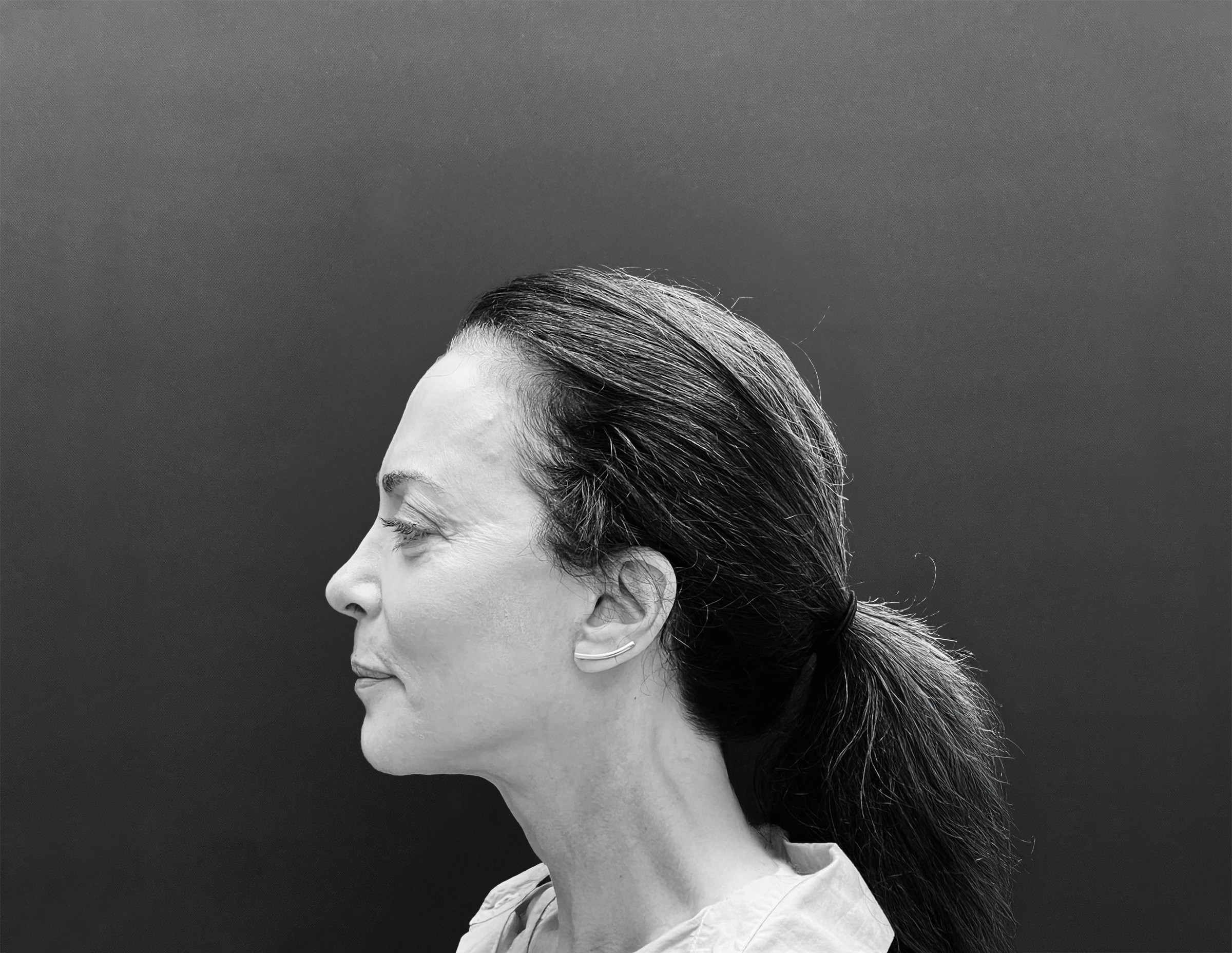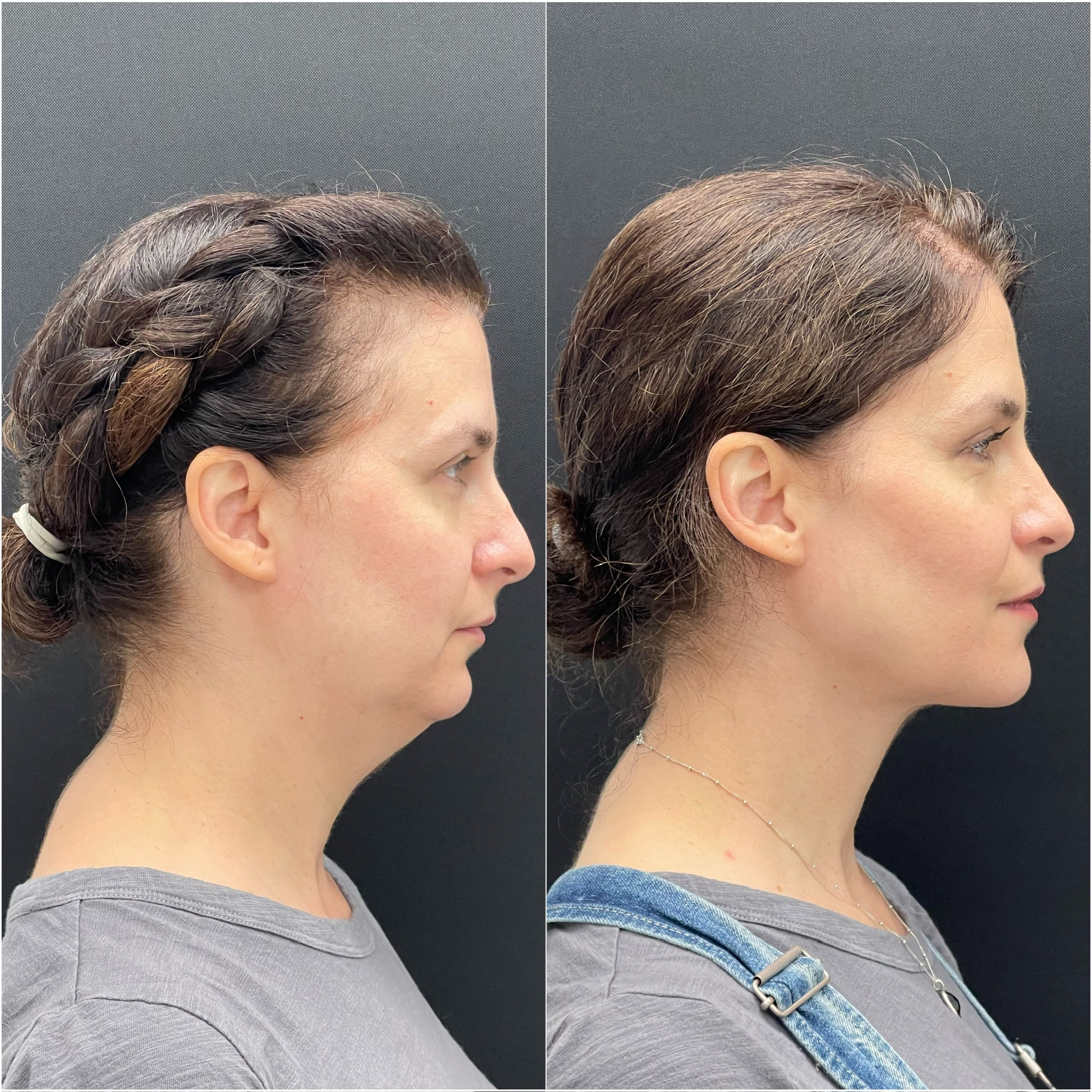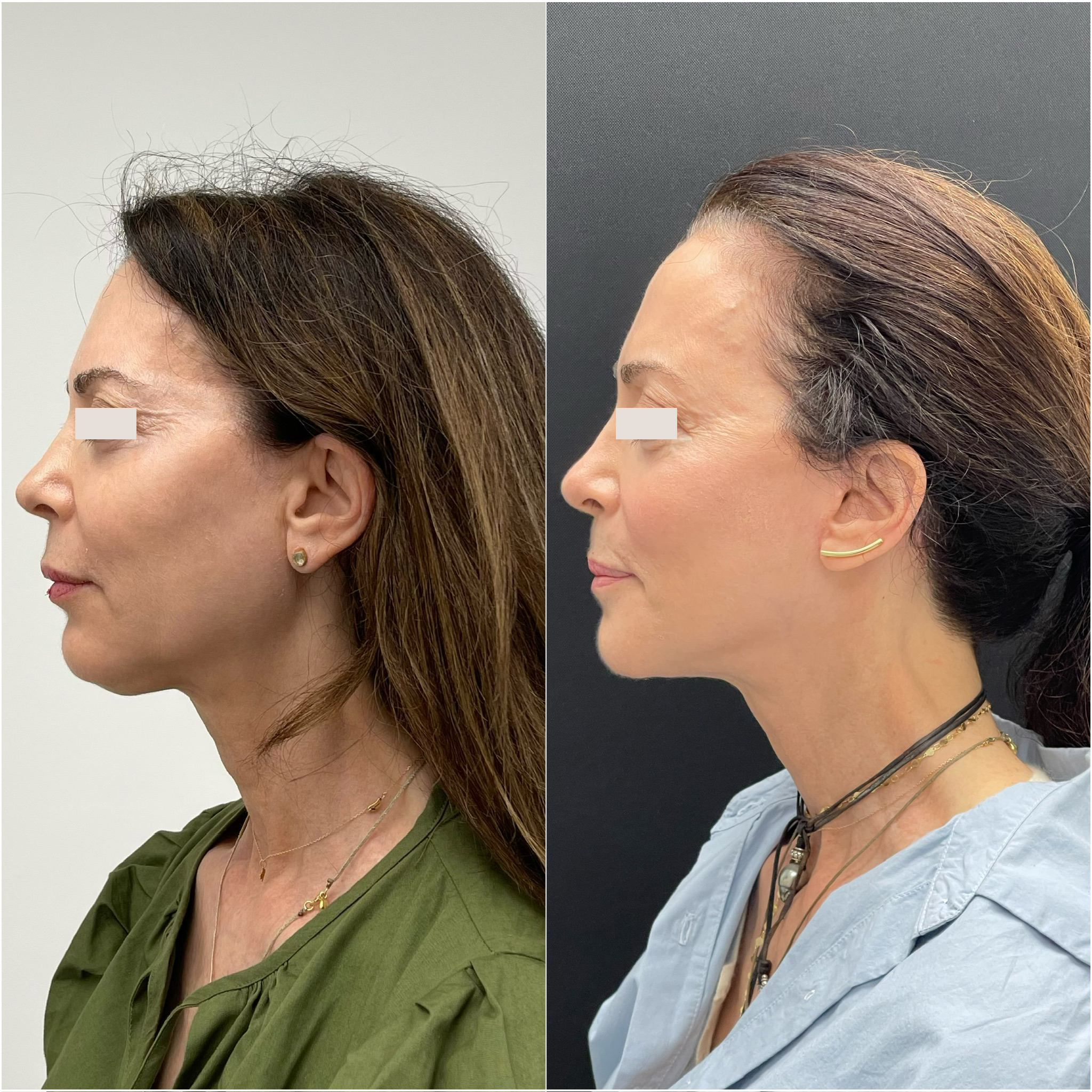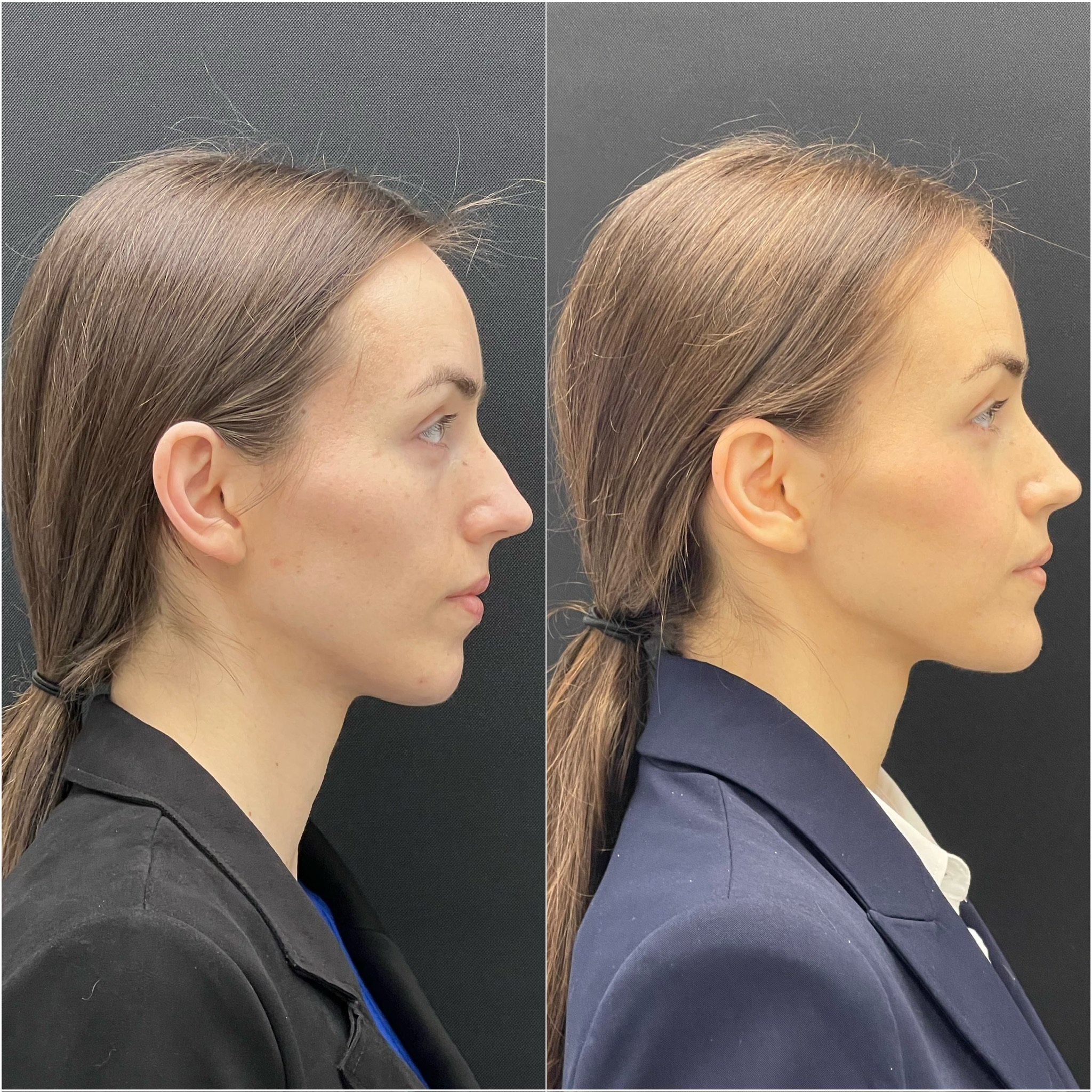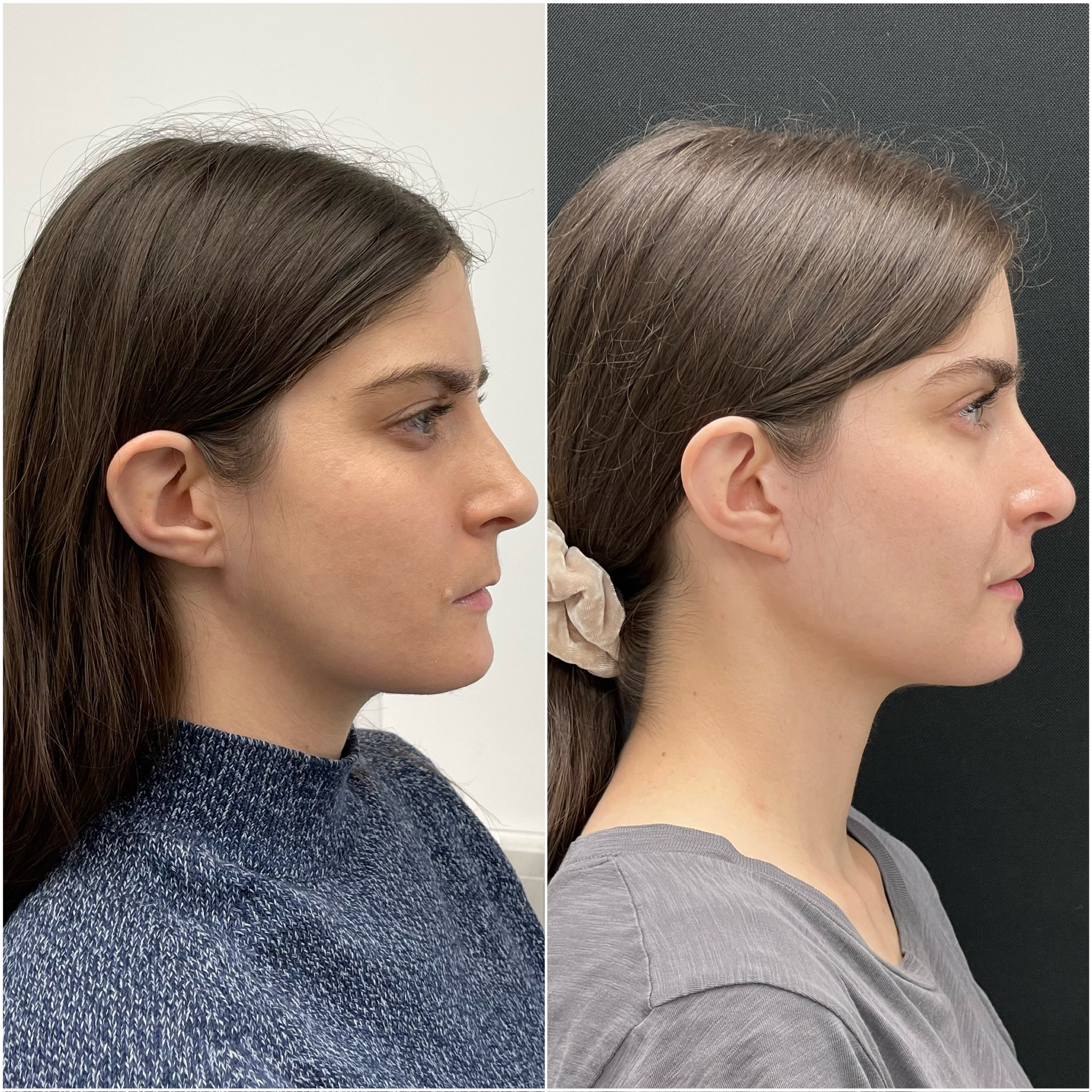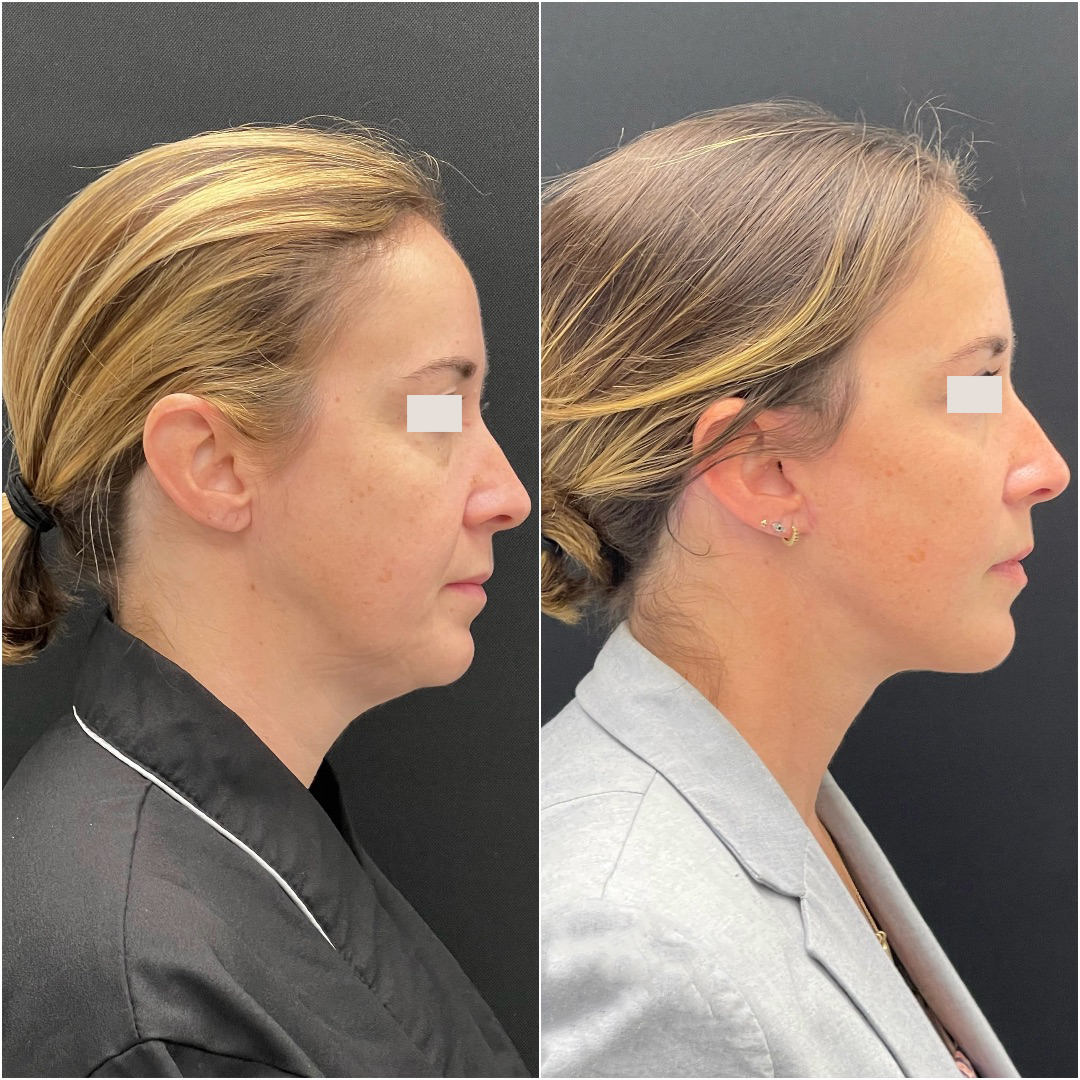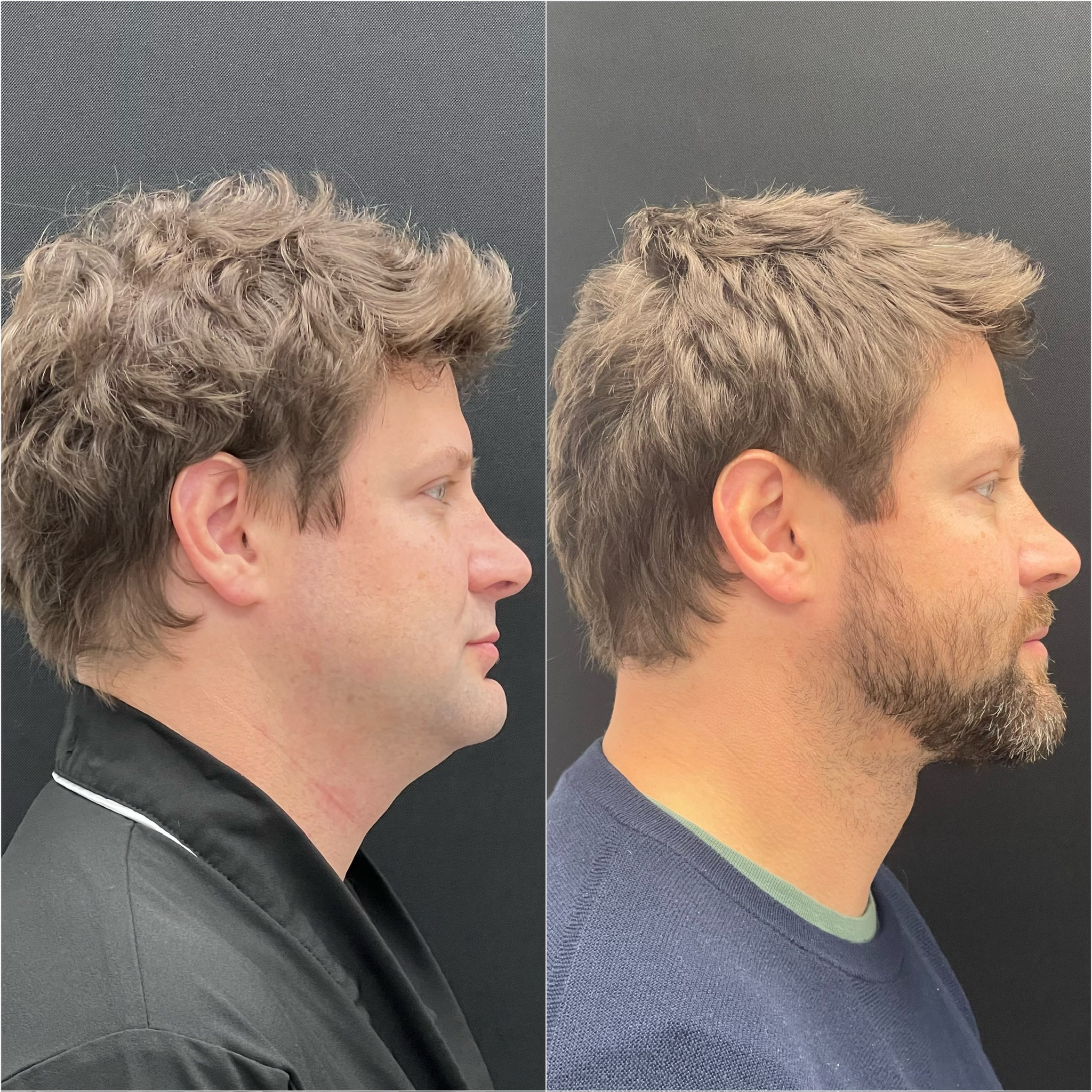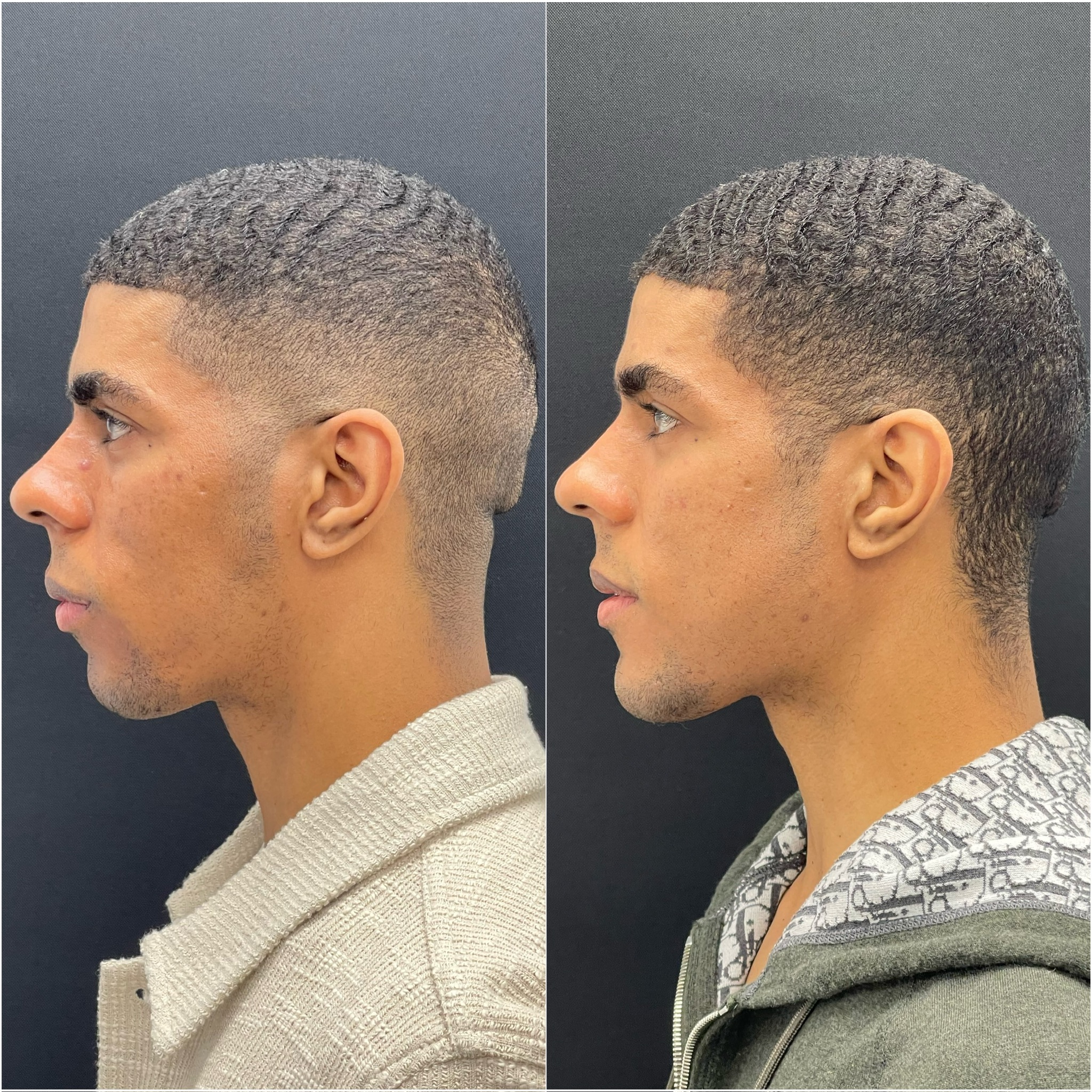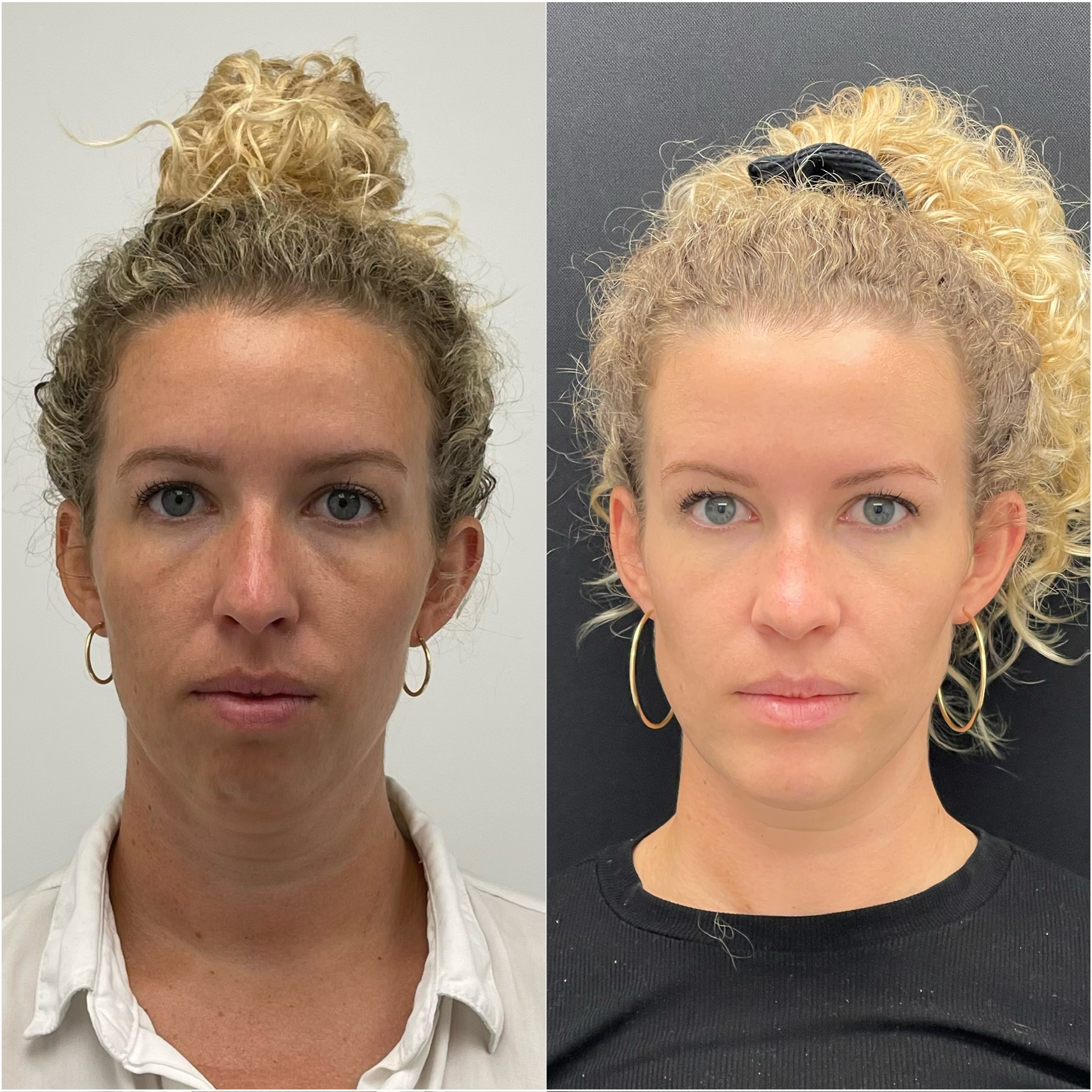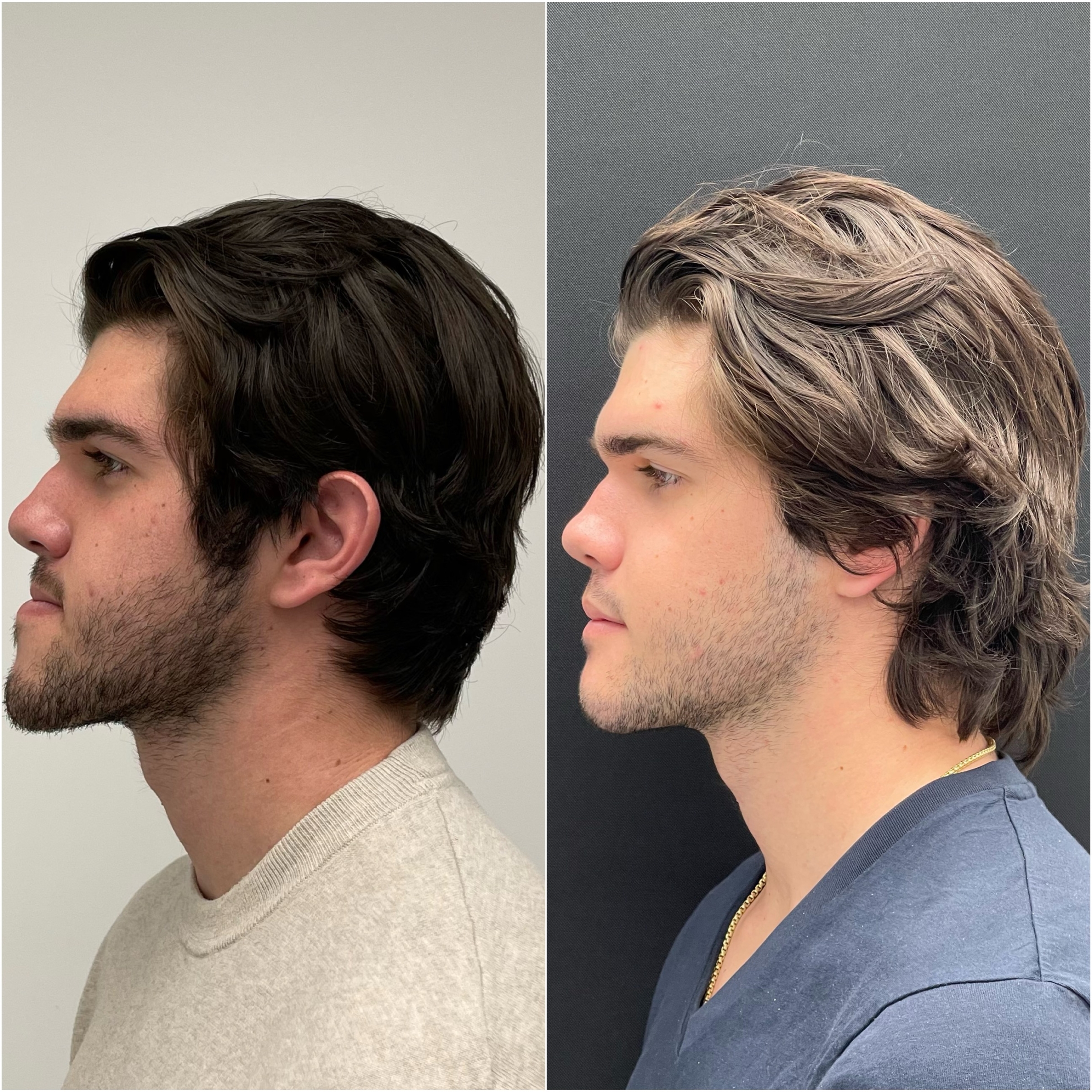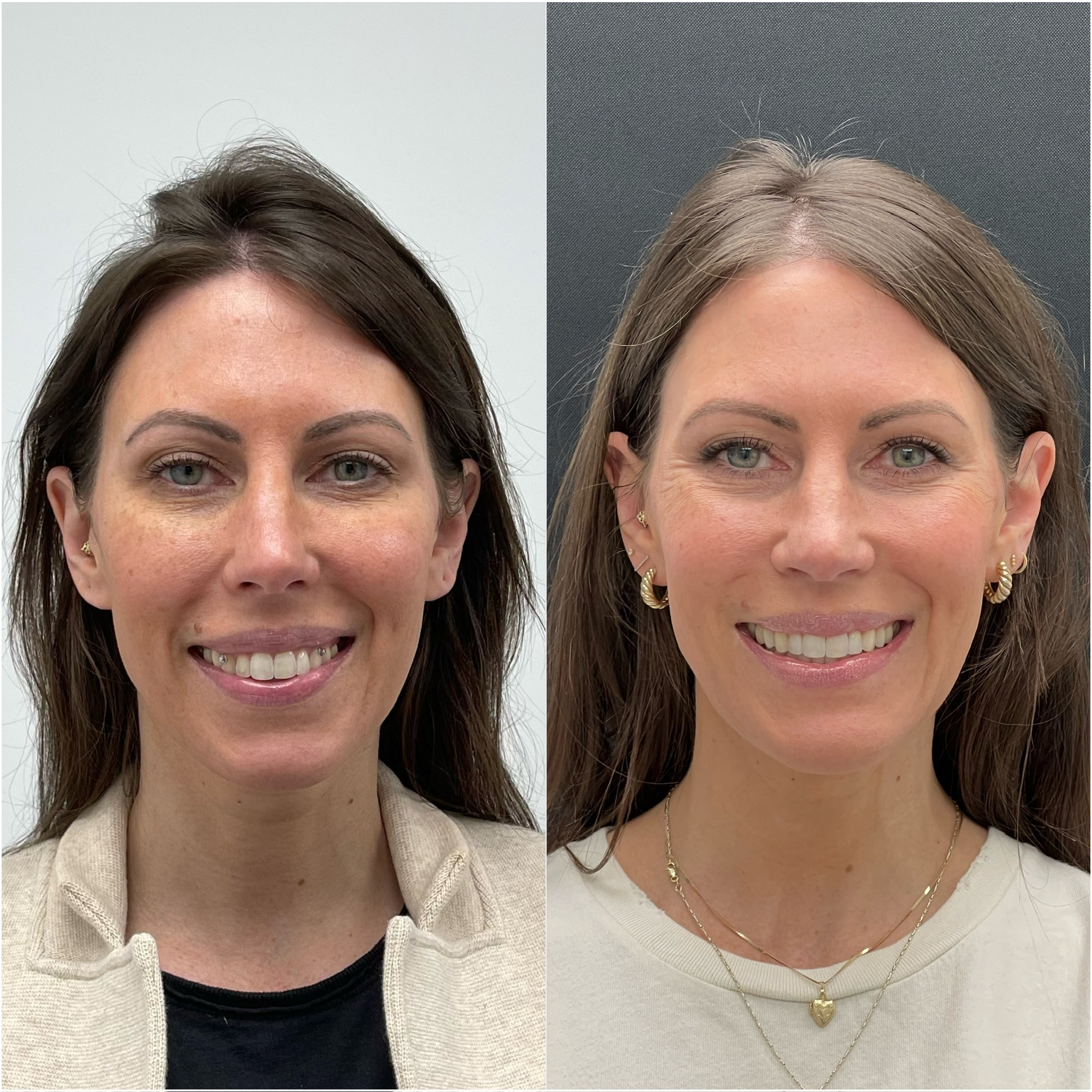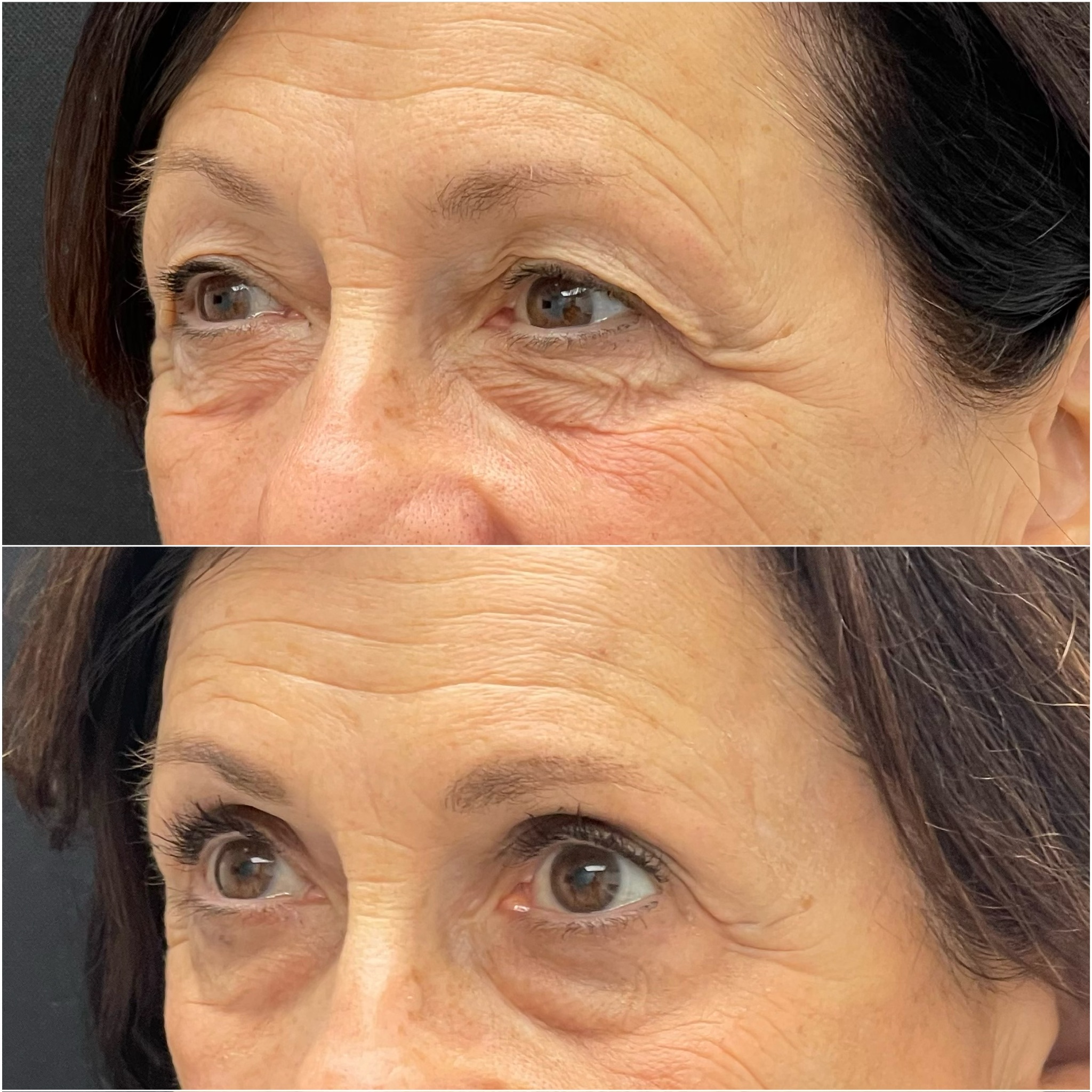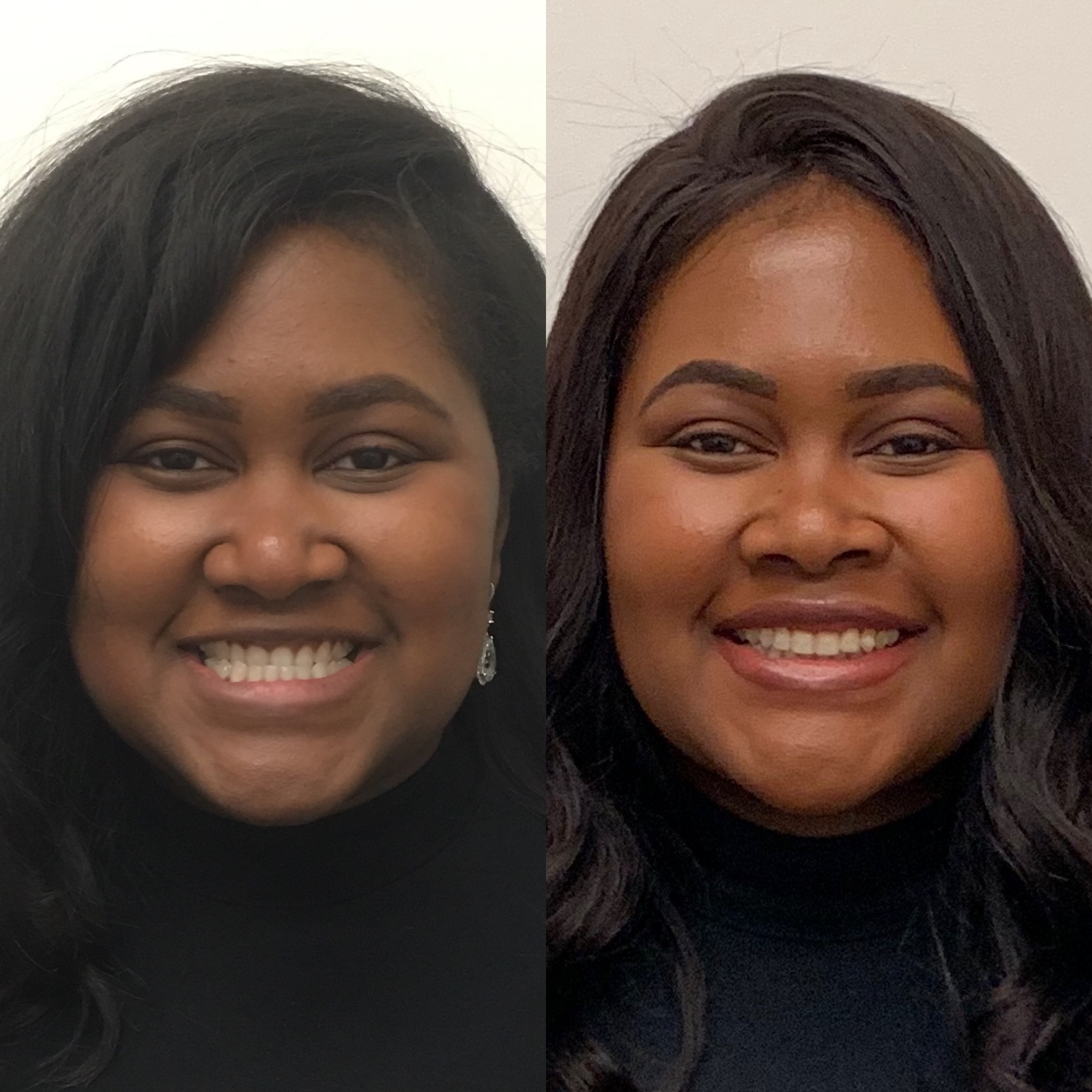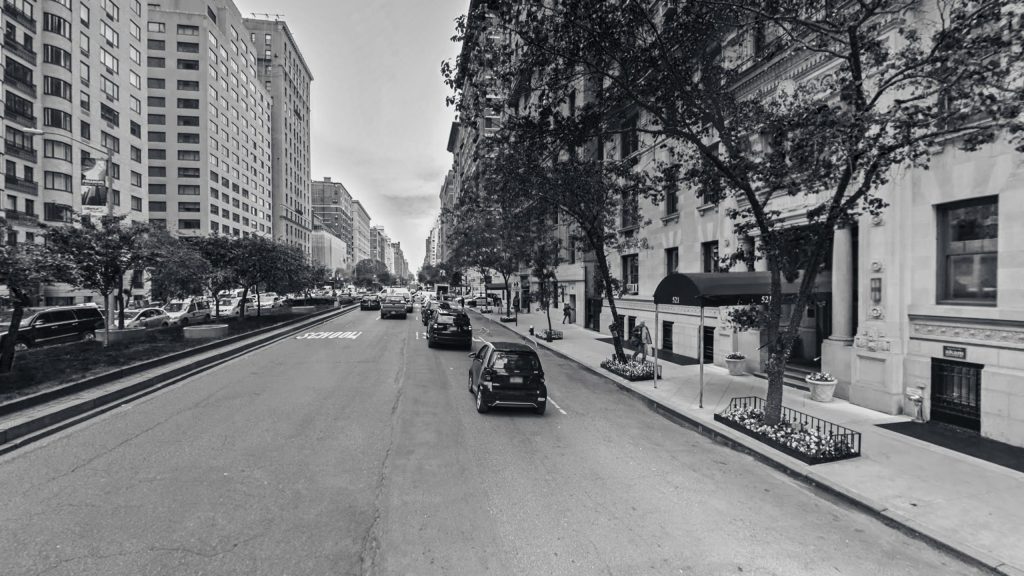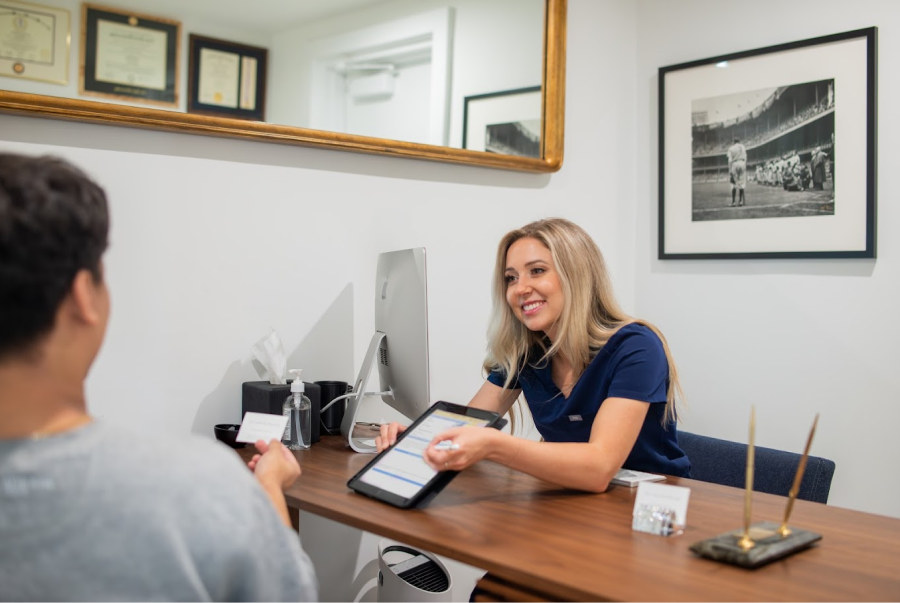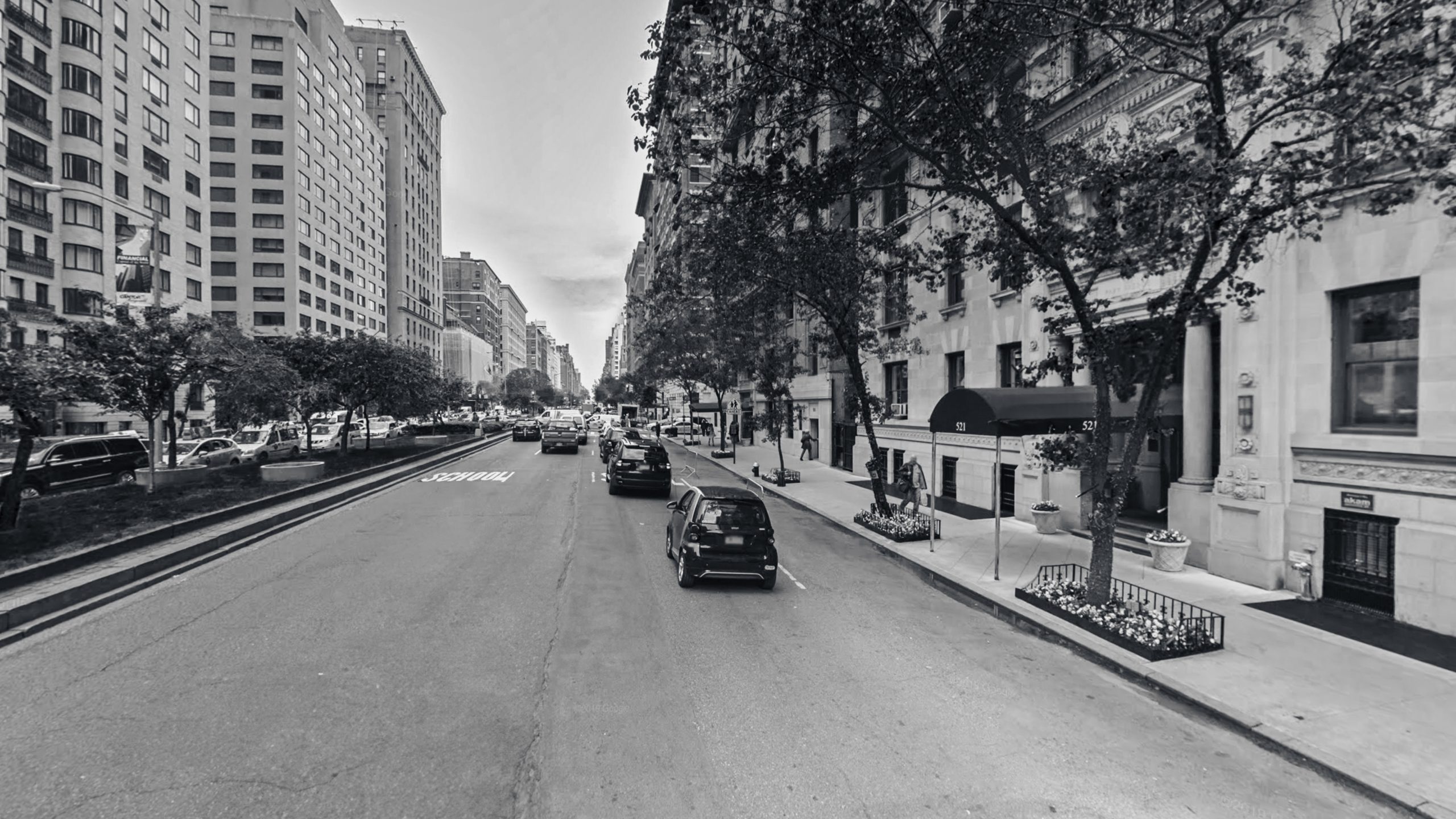Brow Lift
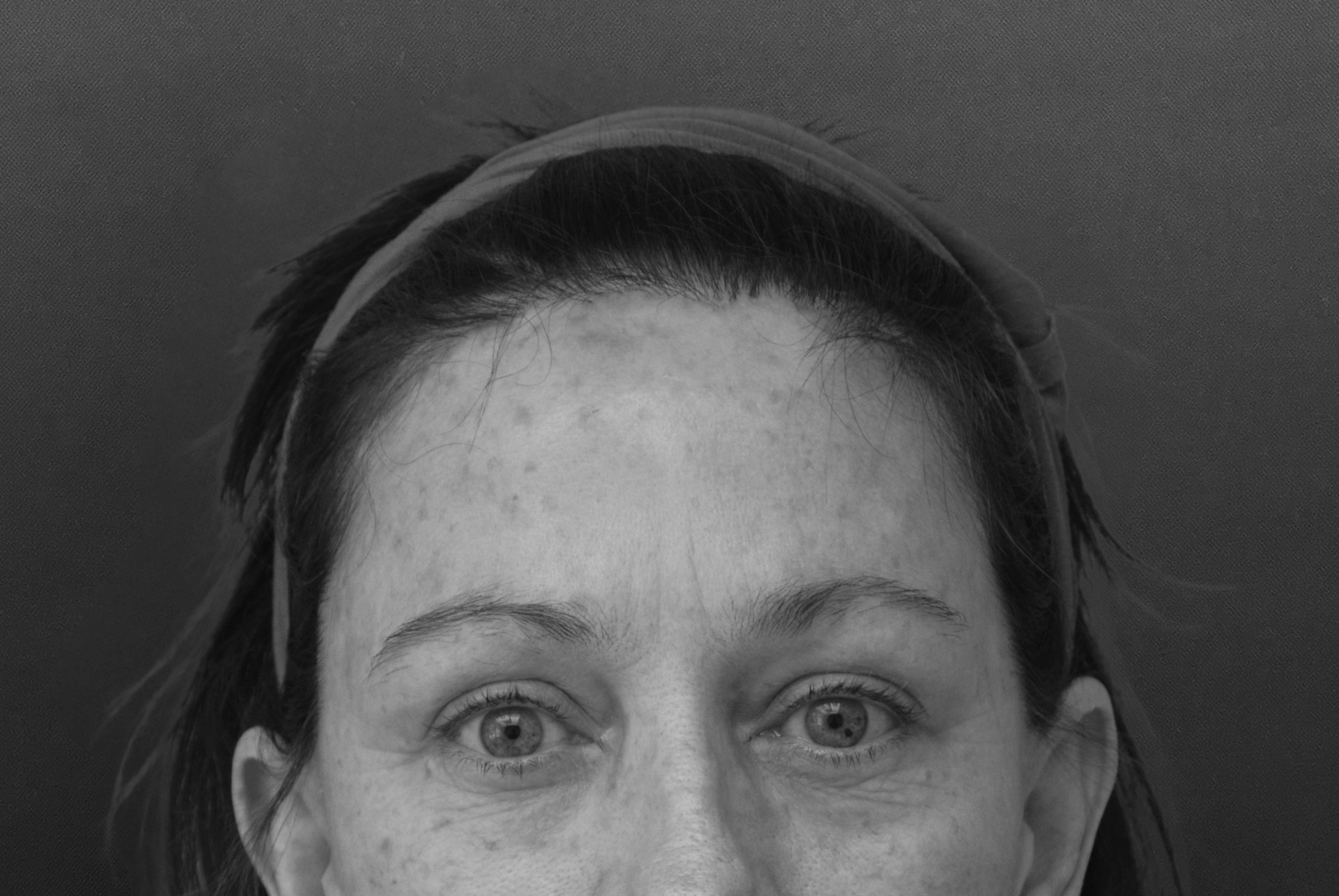
What is a Brow Lift?
A brow lift, also known as a forehead lift, is a cosmetic surgical procedure that raises and repositions the eyebrows to reduce the appearance of forehead wrinkles, frown lines, and sagging brows. It is often performed in conjunction with an blepharoplasty, as these areas are assessed and treated together to create a more youthful, refreshed, and alert appearance around the eyes.
Patient Results
View before and after photos of our past patients.

Benefits of
a Brow Lift
- Restores a youthful appearance by raising sagging brows
- Smooths forehead wrinkles and reduces frown lines
- Opens up the eye area for a brighter, more awake appearance
- Enhances facial harmony by improving the proportions of the upper face
- Reduces the appearance of a heavy or hooded brow
Will a brow lift change my eye shape?
Potentially. A brow lift will help to reduce excess skin on the upper eyelid and “hooding” on the lateral part of the upper lid. Often people think they need the eyelids to be treated; however, a brow lift alone may sufficiently treat the eyelids. For this reason, one should always assess the brow and eyelids together.
Can a brow lift help with vision?
In cases where drooping brows obstruct vision, a brow lift can improve field of view.
Will my hairline change after a brow lift?
Possibly. Some types of brow lift can elevate the hairline, others can lower it, and some techniques leave the hairline unaltered.
Can I get Botox instead of a brow lift?
Botox can give a very subtle amount of brow elevation if placed in between the eyebrows and at the crow’s feet areas. However, this is typically a very mild amount of elevation. Botox in the forehead for forehead lines will actually lower the brow, not lift it, so it should be avoided in patients who are already worried about a dropped brow. Dropping the brows can make the eyelids look heavier as well.
Should I combine a brow lift with other procedures?
Brow lifts are often performed as an extension of a face lift and/or in conjunction with blepharoplasty to address the entire eye area.
When is the right time for a brow lift?
Brow lifts are commonly performed for patients in their 40’s to 60’s, but younger patients with genetic factors such as heavy brows may also benefit from the procedure.
What type of anesthesia is used?
This is commonly done under a light “twilight” (IV) sedation. This allows you to remain comfortable and relaxed during the procedure.
How long does this surgery typically take?
1-4 hours
Do I need to stay overnight at the facility?
No, patients typically return home the same day for this procedure.
What is the recovery time?
Initial recovery from a brow lift typically takes about 1-2 weeks, during which most swelling and bruising subside. Full recovery that includes the fading of scars and resolution of small amounts of swelling can take several months to a year.
How long until I can be out in public?
Most patients can resume work (and are considered “restaurant-ready”) within one week. For social events such as weddings (guest), graduations, or holidays, one should allow at least 2 weeks for recovery.
How soon can I travel after my surgery?
We typically ask patients to remain in town for a period of 1-2 weeks before flying. However, car rides of 2-4 hours are ok the following day in most cases. We would still like to see you for a postoperative visit at the one-week mark.
How long until I can exercise?
Very light activity such as a brisk walk or a light stationary bike is encouraged as soon as you feel ready for it after surgery. Moderate exercise is usually resumed in about two weeks and heavy exercise in one month.
Are there scars?
Yes, any skin incision will leave a scar. If the incisions are created and closed meticulously, the scars are typically imperceptible at 6-12 months, sometimes sooner. Proper postoperative care will help the scars heal better and faster. This includes sun block, silicone gel, and avoiding sun exposure during the healing phase
Where will the incisions be?
Depending on the type of brow lift, the incisions can be very variable. Traditional “old-school” brow lifts are called coronal brow lifts, and this involves an incision across the top of the scalp. Newer types of brow lifts can involve as few as two small incisions in the hairline, each about a centimeter or less. One type called a transfollicular brow lift has the benefit of allowing the hairline to be lowered. A minimally invasive or “gliding” brow lift requires only tiny “poke” incisions. There is also a lateral brow lift, which is commonly done as an extension of a face lift.
What to Expect
After Surgery
- Most patients can resume work (and are considered “restaurant-ready”) within one week
- For social events such as weddings (guest), graduations, or holidays, one should allow at least 2 weeks for recovery
- Exercise: Very light activity such as a brisk walk or a light stationary bike is encouraged as soon as the patient feels ready for it after surgery. Moderate exercise is usually resumed in about two weeks and heavy exercise in one month
- Usually about 90% of swelling/bruising resolves within 1-2 weeks
- Patients will need to avoid direct sun exposure to the incisions for at least a year and use sunscreen to protect healing skin
- We will see the patient for postoperative appointments typically after 1-2 days, 5-7 days, 10-14 days, 1 month, 3 months, 6 months, and one year. Sutures are removed during the first few postoperative appointments
